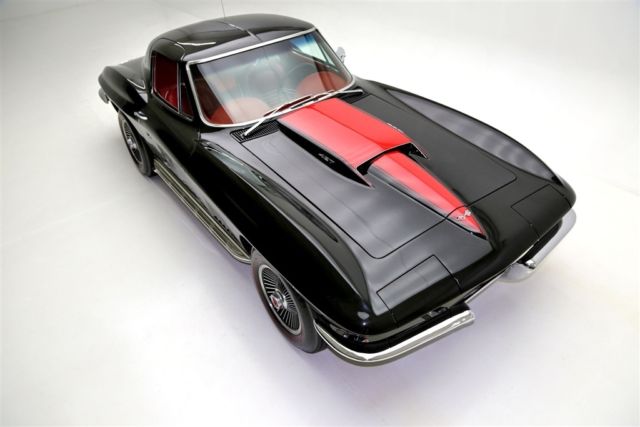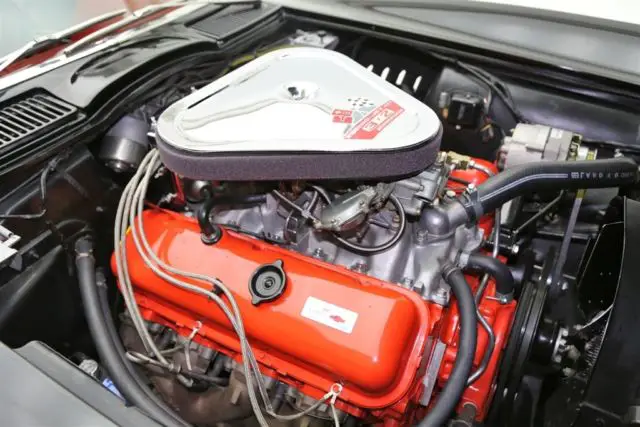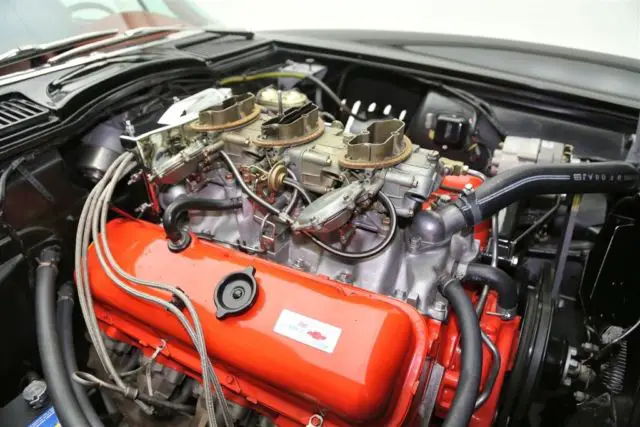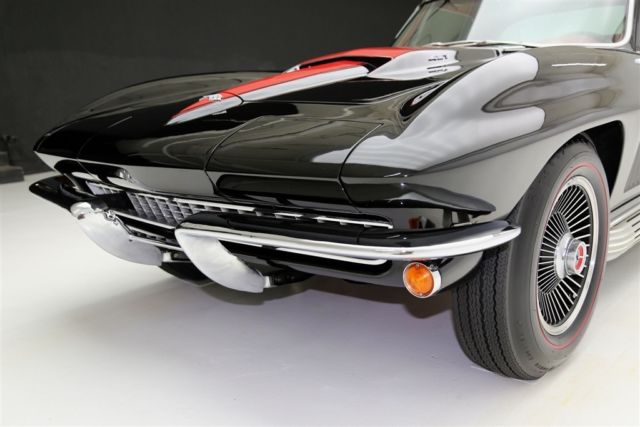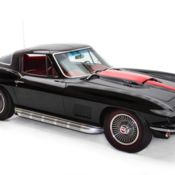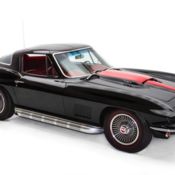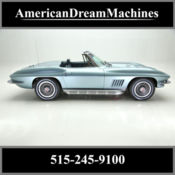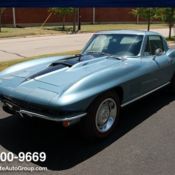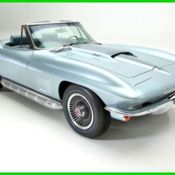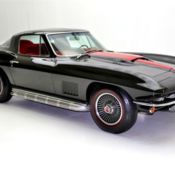1967 Chevrolet Corvette 427/435hp #'s Match Manual Coupe
| Condition: | Used |
| Make: | Chevrolet |
| Model: | Corvette |
| Type: | Coupe |
| Trim: | 427/435hp #'s Match |
| Year: | 1967 |
| VIN: | 194377S116065 |
| Color: | Black |
| Engine: | 427/435 |
| Transmission: | Manual |
| Interior color: | Red |
| Vehicle Title: | Clear |
| Item location: | Local pick-up only |
| Extras |
| Listed by | Private seller |
Description of 1967 Chevrolet Corvette 427/435hp #'s Match |
|
Factory color jet black 1967 Chey Corvette coupe with red interior and with a red stinger hood. This is a body-off restoration has very few miles since the restoration. This Vette has a date code correct, numbers matching 427/435HP engine with a Tri-Power 3x2 carburetor setup. The engine sounds great through the beautiful side exhaust. Equipped with power steering to track through those curvy roads. The turbine Style bolt On wheels with redline tires connect this stunning car to the the pavement. This gorgeous coupe was purchased from a premier collection of Corvettes and was showcased in climate controlled environment with very few miles added since purchased. This is not an NCRS car and does not have the original paper work. If it did it would be priced significantly higher. Exterior: True black car with a mirror like finish. Meticulously restored. Couple body style. Beautiful body lines and body panels have a great fit. Tough sounding side exhaust. New bolt on wheels. Reline tires.Interior: Lush red leather bucket seats. Like new dash. Clear crisp gauges. Correct factory AM/FM radio. Correct clock. Tinted glass.Mechanics: Date coded correct (A257), numbers matching (TO209JE) 427/435 HP engine. Correct Corvette Tri-Power 3x2 carburetor (3894374). Muncie M21 close ratio 4 speed with numbers matching. Power steering. Disc brakes. Drive train is very correct and authenticated.Undercarriage: With this caliber of car the undercarriage is what one would expect, it is great!1967 Chevrolet Corvette (C2)The 1967 Corvette Sting Ray was the last Corvette of the second generation, and five years of refinements made it the best of the line. Although it was meant to be a redesign year, its intended successor the C3 was found to have some undesirable aerodynamic traits. Duntov demanded more time in the wind tunnel to devise fixes before it went into production.Changes were again modest: Five smaller front fender vents replaced the three larger ones, and flat-finish rockers sans ribbing conferred a lower, less chunky appearance. New was a single backup light, mounted above the license plate. The previous models' wheel covers gave way to slotted six-inch Rally wheels with chrome beauty rings and lug nuts concealed behind chrome caps. Interior alterations were modest and included revised upholstery, and the handbrake moved from beneath the dash to between the seats. The convertible's optional hardtop was offered with a black vinyl cover, which was a fad among all cars at the time. The 427 was available with a 1282 ft/min (605 L/s) Holley triple two-barrel carburetor arrangement, which the factory called Tri-Power. The ultimate Corvette engine for 1967 was coded L88, even wilder than the L89, and was as close to a pure racing engine as Chevy had ever offered in regular production. Besides the lightweight heads and bigger ports, it came with an even hotter camshaft, stratospheric 12.5:1 compression, an aluminum radiator, small-diameter flywheel, and a single huge Holley four-barrel carburetor. Although the factory advertised L88 rating was 430 bhp at 4600 rpm, the true rating was said to be about 560 bhp at 6400 rpm. The very high compression ratio required 103-octane racing fuel, which was available only at select service stations. Clearly this was not an engine for the casual motorist. When the L88 was ordered, Chevy made several individual options mandatory, including Positraction, the transistorized ignition, heavy-duty suspension, and power brakes, as well as RPO C48, which deleted the normal radio and heater to cut down on weight and discourage the car's use on the street. As costly as it was powerful - at an additional $1,500 over the base $4,240.75 price - the L88 engine and required options were sold to a mere 20 buyers that year. With potential buyers anticipating the car's overdue redesign, sales for the Sting Ray's final year totaled 22,940, down over 5,000 units from 1966 results. Meanwhile, Chevrolet readied its third-generation Corvette for the 1968 model year.American Dream Machines |
 Home
Home Contact us
Contact us NEWEST CARS
NEWEST CARS SELL YOUR CAR
SELL YOUR CAR FAQ
FAQ
